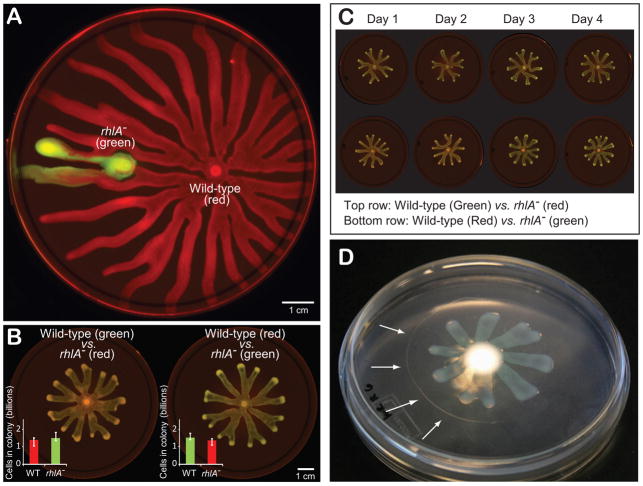Figure 2.
The mutant rhlA−, lacking biosurfactant secretion, can use the secretions of others to swarm yet has no measurable competitive advantage. (A) Wild-type bacteria and rhlA− were placed on the same plate in colonies initially separated by 2 cm. rhlA− bacteria (labeled in green), incapable of swarming on their own, became motile once they became mixed with biosurfactant-secreting wild-type cells (labeled in red, see video SV2). (B) rhlA− swarms equally as well as the wild-type when mixed in the same colony at 1:1. The two genotypes show no fitness difference within the mixat 24 h, suggesting a low cost of biosurfactant secretion. (C) The wild-type remains robustly at 1:1 frequency (24 h of growth) when mixed with the rhlA− even overfour days of consecutive passages (P>0.6) with no visible loss in swarming over time. (D) The massive ring of biosurfactants secreted (indicated with white arrows) is visible by naked eye.

